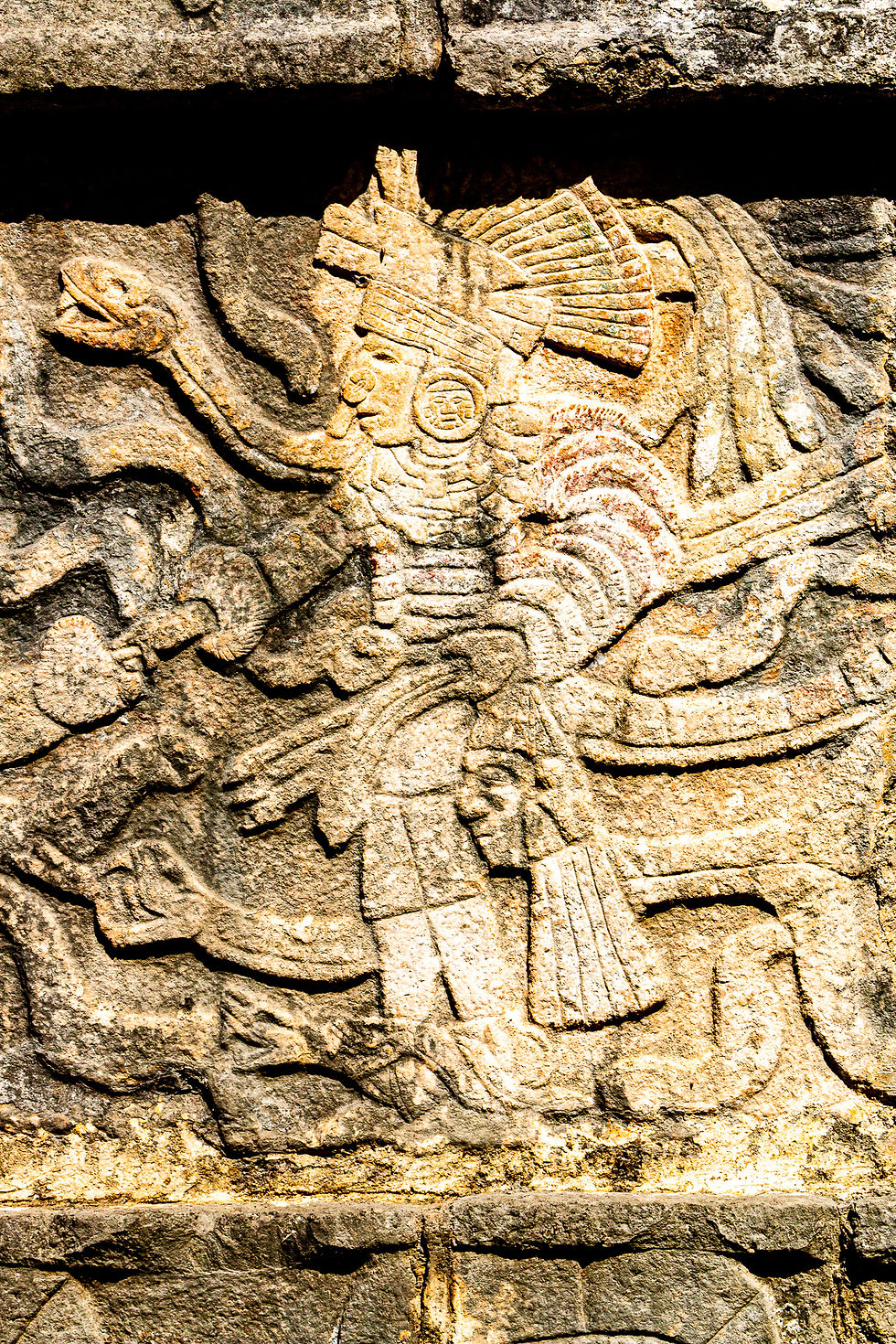How to Visit Chichén Itzá (Without Losing Your Cool or Your Shot)
- Rand Blimes

- May 23
- 4 min read

How to Visit Chichén Itzá
We left a little after 7 a.m., which, if you're not a family of early risers, is your first minor miracle. But getting to Chichén Itzá early mean smaller crowds, and lower risk of heat stroke. So go early.
We had our own car, and from our base in Valladolid, I took the libre road—the non-toll option. It was totally fine. If you’re debating whether to pay for the cuota road, I say don’t bother. The libre road got us there in under an hour, and we saved enough pesos to buy cold drinks on the way out (trust me, you'll want them).
If you don’t have your own wheels, getting to Chichén Itzá is still easy. From Valladolid, colectivos (shared vans) leave regularly from the main terminal and take about 45 minutes. From Mérida or Cancún, ADO buses run daily and drop you right near the site’s entrance—it just takes a bit longer (2–3 hours each way), so catch an early bus if you want to beat the heat and the crowds. Tour companies also offer day trips, but those tend to arrive mid-morning, so you’ll be competing with every sunhat-and-selfie-stick combo in the hemisphere. If you want fewer crowds and more flexibility, go early and go local.
The gates open at 8:00 a.m. We stopped briefly to grab breakfast and stock up on water, so we didn’t actually get in line until a few minutes after. This made me a little twitchy. I was worried the crowds would ruin my chance to get a clean shot of the main pyramid. You may recall my infamous abandonment of the family at the Taj Mahal for the same reason.
But panic was unnecessary. Even a half an hour after opening, it was surprisingly easy to get a clear photo of the Temple of Kukulcán without any tourists in the frame. No need to elbow anyone or pretend you’re filming a documentary just to stake your claim.
What It Costs and What You Get
Chichén Itzá is open every day from 8am to 5pm, with the last entry at 4pm. When we were there in 2018, tickets cost 250 pesos per person. As of 2025, that has increased to 614 pesos! It is possible to buy tickets online, but you can also pick them up on site.
In theory, you need to pay 80 pesos of your fee in cash (the rest can be put on a credit card . . . in theory). There is an ATM onsite, but I would recommend you show up with the pesos in your pocket if you plan to buy your ticket at the gate.
If you want to hire a guide, your best bet is usually to hire one on site. You can pick up a guide at the gate for 650-1000 pesos.

Once you’re through the gate, you’ll almost immediately hit the main pyramid. The girls and I went our separate photographic ways—me circling the structure from all angles, focusing on the pyramid; them doing more “Insta-worthy” shots of themselves posing with the pyramid in the background.
Pro tip: one half of the pyramid is fully restored, the other half left in its original state. I actually think it’s a genius move. It lets you imagine the glory days while still respecting the site's age and wear.
Beyond the Pyramid

Chichén Itzá is a sprawling site, sitting in the middle of dense jungle. The main pyramid is the big-ticket site everyone comes to see, but you should plan to check out the other structures as well. Some of the carvings are impressively gruesome—think skull racks and jaguar thrones. The pok-ta-pok ball court is worth a pause. The stone rings are way up high on the walls. Imagine trying to launch a heavy rubber ball through one of those without using your hands. It makes LeBron look like he’s playing on beginner mode.
We wandered through the site, alternating between exploring ruins and finding bits of shade to collapse in while I explained the context of what we were seeing. To get the most out of these sites, either brush up on you Mayan history before you go or bring a good guide (or, in our case, a slightly over-prepared father).
The Sacred Cenote
We walked out to the sacred cenote, where human sacrifices were made to appease the gods. It’s not picturesque in the Instagram sense—think murky green and moss-covered—but it’s atmospheric.
How Long You Need
We tend to be efficient travelers. We don’t rush, and we take plenty of rests, but we also don't tend to stay in one place too long. Two and a half hours felt like enough time for us to give Chichén Itzá its due. That included photography, site wandering, story time in the shade, and the sacred cenote detour. If you're a lingerer or love your guided tours, maybe budget closer to 3–4 hours.
But for us, 2.5 hours. Job done. History absorbed. Camera rolls full. All of us on the verge of overheating and ready to go spend the afternoon submerged in a cenote.
Because travel, we stood in the shadow of a pyramid where ancient astronomers tracked the stars and priests summoned the gods. And we were home by lunch.



Comments